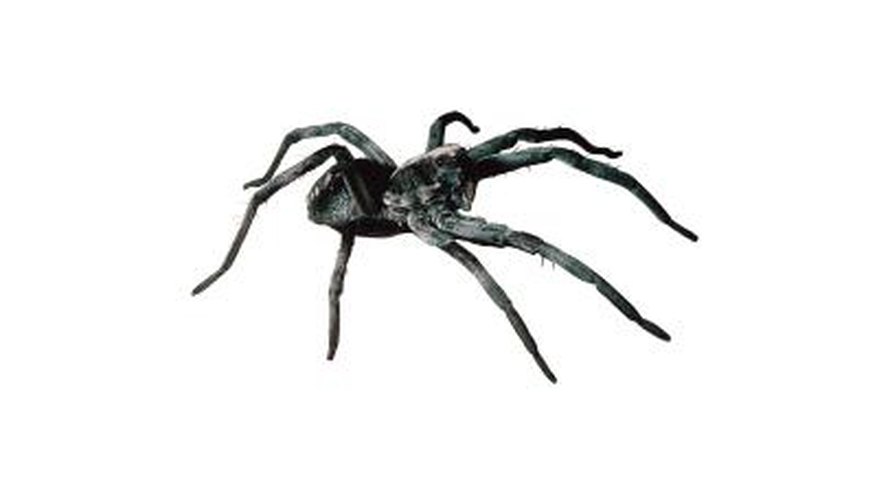The wolf spider is a solitary arachnid, commonly found in gardens or in the home. Although some species are relatively large, the spider rarely bites unless harassed by handling. It has excellent eyesight and is an agile hunter. Females release pheromones to attract males during courtship and identifying the difference between male and female wolf spiders can only be done by observing certain characteristics in adults when they reach various stages of sexual maturity.
Sexual Maturity in Wolf Spiders
Before attempting to identify the differences between the male and female wolf spider, it is necessary to first find out whether the individual being observed is a mature spider, otherwise the only way to accurately establish the difference would be through the analysis of its chromosomes. In adults, there are a few behaviour or appearance characteristics that can provide some evidence of gender identification. These characteristics are prominent during sexual maturity, which occurs after the young spider's final moult. The moulting process involves the spider shedding its old, exoskeleton that is replaced by a new one. Once sexually mature, the spider does not moult again. The moulting process can be observed by keeping a young wolf spider (immature spiders are smaller than the adults of a specific, identified species) in captivity and studying it until it is ready to moult.
- Before attempting to identify the differences between the male and female wolf spider, it is necessary to first find out whether the individual being observed is a mature spider, otherwise the only way to accurately establish the difference would be through the analysis of its chromosomes.
- The moulting process can be observed by keeping a young wolf spider (immature spiders are smaller than the adults of a specific, identified species) in captivity and studying it until it is ready to moult.
Male Wolf Spider
Identifying a male wolf spider is more easily done than the female. One way to recognise a male spider is to notice the swollen pedipalps, or palps, at the front of its body. These are on the ends of what look like short arms held in front of the head. These palps hold the sperm that will be transferred to the female's abdomen. Once a young male's pedipalps swell, it is often just one moult away from maturity. Female spiders have pedipalps, but they do not carry the swollen tips like those of the adult males.
- Identifying a male wolf spider is more easily done than the female.
- One way to recognise a male spider is to notice the swollen pedipalps, or palps, at the front of its body.
Female Wolf Spider
Identifying the female spider can be more difficult unless the presence of the epigynum, the area located on the ventral surface (underside) of her abdomen that holds the sperm, is seen. This can be done with a magnifying glass while the spider is in a glass jar or vial. This small, ductlike structure can be seen where the cephalothorax (front part of the body) is joined to the abdomen (back segment). Female wolf spiders carry their egg-sacs on their abdomens and when the spiderlings hatch, she carries them for a week or two, often hundreds at a time. This is a definite way to identify a female wolf spider since the males do not participate in carrying the young.
- Identifying the female spider can be more difficult unless the presence of the epigynum, the area located on the ventral surface (underside) of her abdomen that holds the sperm, is seen.
Lifespan of Male and Female Wolf Spiders
Another, less obvious difference between male and female wolf spiders is their lifespans. Most species of wolf spider will live up to five years, the male dying after its first mating, in the summer of its maturity and the female might live for up to one more year following her first pregnancy.
